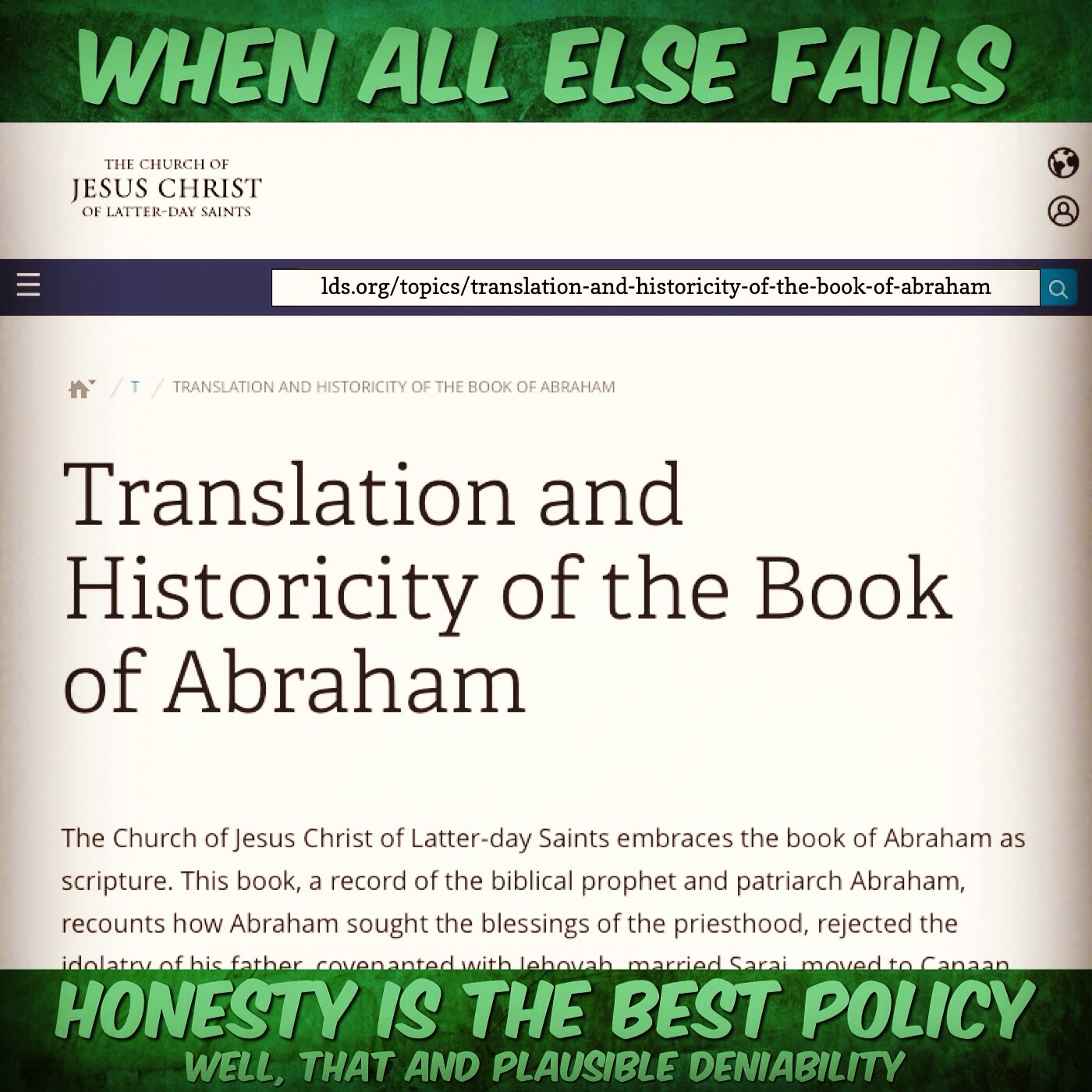
CHURCH ESSAY: “None of the characters on the papyrus fragments mentioned Abraham’s name or any of the events recorded in the book of Abraham. Mormon and non-Mormon Egyptologists agree that the characters on the fragments do not match the translation given in the book of Abraham, though there is not unanimity, even among non-Mormon scholars, about the proper interpretation of the vignettes on these fragments. Scholars have identified the papyrus fragments as parts of standard funerary texts that were deposited with mummified bodies. These fragments date to between the third century B.C.E. and the first century C.E., long after Abraham lived.” –from the church essay Translation and Historicity of the Book of Abraham. [source]
COMMENTARY: When the church received the papyrus associated with the Book of Abraham in the late ’60s, they discovered that the name Abraham never appears anywhere on the documents. A reasonable person might conclude that Joseph Smith had simply made up his “translation” of the Book of Abraham. The church could have immediately removed the Book of Abraham from its officially accepted canon. Instead, it continued to teach that it was a translation of Egyptian documents written by the hand of Abraham, and in Sunday school lesson manuals that discussed the book, it failed to inform its members of the discrepancy in the translation. Finally, though, with this information being increasingly available on the internet, the church has decided that honesty and plausible deniability are the best policies, and it has published an online essay in which it admits that the translation is inaccurate and tries to excuse that uncomfortable little fact away as it continues to insist that the book is inspired scripture. I don’t buy it. But what do I know? I’m just another apostate.




